Getting a Gerbil
 Gerbils are friendly, curious and quick little animals. They make a fascinating pet for both adults and children. The Mongolian Gerbil is the most common gerbil found in pet shops and is often available in a range of colours. Being that their natural habitat is the desert, gerbils have adapted to conserve water, and are therefore odourless. They are social animals and like to be kept in small, single sex groups or pairs.
Gerbils are friendly, curious and quick little animals. They make a fascinating pet for both adults and children. The Mongolian Gerbil is the most common gerbil found in pet shops and is often available in a range of colours. Being that their natural habitat is the desert, gerbils have adapted to conserve water, and are therefore odourless. They are social animals and like to be kept in small, single sex groups or pairs.
Housing
- A Gerbilarium (a large fish tank with a secure mesh type lid) is the best way to house a gerbil.
- Alternative housing is a large hamster cage, although be wary of this as gerbils are adept at chewing and may chew their way out.
- Cages should be as large as possible.
- Provide cardboard tubes and a nest box in which your gerbil will feel secure.
- A sand bath added to the gerbilarium will allow your gerbil to bathe itself.

Bedding
- Soft wood shavings for burrowing and digging.
- Provide a house or bedroom for your gerbil, where it can nest and feel warm and secure.
- Use soft paper or woolly bedding for nesting material.
- Clean the cage out completely once every week.
Feeding
- Gerbils need a diet with a high content of protein which is low in fat and oils.
- At PAWS we recommend Amos Hamster and Gerbil Mix, which is available in our shop.
- Supplement your gerbil’s diet with small, occasional amounts of fruit and vegetables. Too much of this can give your gerbil an upset stomach.
- Provide clean, fresh drinking water daily from a gravity-fed bottle.
- At PAWS we stock a large variety of gerbil treats and chews. Come and visit us in the shop!
Handling
- Using your hands, gently scoop your gerbil from its cage
- Never lift your gerbil by its tail

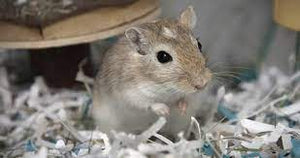
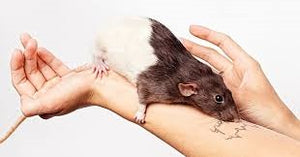
 Rats make great family pets. They are intelligent and interactive and become tame when handled correctly. There are many different colours of rat from white or albino to hooded, Agouti and Cinnamon, as well as the Rex variety of rat which has a curly coat. Rats are social animals and we strongly recommend keeping them in single sex pairs or groups so that they are able to interact.
Rats make great family pets. They are intelligent and interactive and become tame when handled correctly. There are many different colours of rat from white or albino to hooded, Agouti and Cinnamon, as well as the Rex variety of rat which has a curly coat. Rats are social animals and we strongly recommend keeping them in single sex pairs or groups so that they are able to interact.
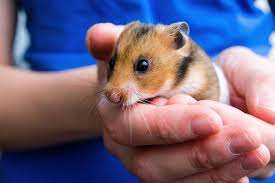
 There are about 20 different breeds of hamster but not all of them are suitable to be household pets. The most common is the Syrian Hamster (also known as the golden or standard hamster) and Dwarf hamsters (which are also popular and are much smaller in stature) e.g. Russian, Chinese and Roborovski.
There are about 20 different breeds of hamster but not all of them are suitable to be household pets. The most common is the Syrian Hamster (also known as the golden or standard hamster) and Dwarf hamsters (which are also popular and are much smaller in stature) e.g. Russian, Chinese and Roborovski.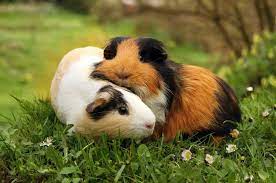
 Guinea pigs make good companions for children and adults alike. They are active, social animals and can be great fun to keep. Also known as Cavies, guinea pigs originate from Peru in South America. There are three main breeds of guinea pigs, and each has a different style coat.
Guinea pigs make good companions for children and adults alike. They are active, social animals and can be great fun to keep. Also known as Cavies, guinea pigs originate from Peru in South America. There are three main breeds of guinea pigs, and each has a different style coat. Traditionally, guinea pigs are kept in a hutch outdoors. This hutch needs to be as large as possible in order to give the guinea pig plenty of room to run around. Make sure you purchase a sturdy hutch and keep it raised at least 25cm off the ground in order to protect the guinea pig from predators and to keep the base of the hutch dry. If you decide to keep your guinea pig indoors, you need to keep it in a cage similar to those used to house hamsters, only much larger. Keep the guinea pig’s cage in a cool room, out of direct sunlight and draughts.
Traditionally, guinea pigs are kept in a hutch outdoors. This hutch needs to be as large as possible in order to give the guinea pig plenty of room to run around. Make sure you purchase a sturdy hutch and keep it raised at least 25cm off the ground in order to protect the guinea pig from predators and to keep the base of the hutch dry. If you decide to keep your guinea pig indoors, you need to keep it in a cage similar to those used to house hamsters, only much larger. Keep the guinea pig’s cage in a cool room, out of direct sunlight and draughts.



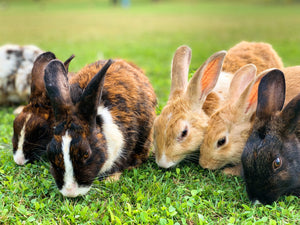
 Rabbits are tame and friendly animals and are a very good pet for older children. Traditionally rabbits are kept in a hutch outdoors, but are becoming increasingly popular as house pets. Being sociable animals and enjoying the company of other rabbits, it is nice to keep two or more. However, if you plan to keep more than one rabbit, it is a good idea to have them neutered.
Rabbits are tame and friendly animals and are a very good pet for older children. Traditionally rabbits are kept in a hutch outdoors, but are becoming increasingly popular as house pets. Being sociable animals and enjoying the company of other rabbits, it is nice to keep two or more. However, if you plan to keep more than one rabbit, it is a good idea to have them neutered. For rabbits living outdoors, you should provide a hutch which is sturdy and waterproof. Place it in a sheltered position or in a shed, at least 25cm off the floor. This prevents rising damp and problems with vermin.
For rabbits living outdoors, you should provide a hutch which is sturdy and waterproof. Place it in a sheltered position or in a shed, at least 25cm off the floor. This prevents rising damp and problems with vermin.




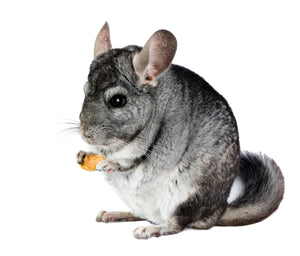
 There are two types of chinchilla: The Lanigera, with a pointed nose and angular face, and the Chinchilla Brevicaudata, which is larger than the Lanigera with a thicker neck and shoulders but a short tail. There is a wide variety of coat colours available. All chinchillas have very thick, dense fur.
There are two types of chinchilla: The Lanigera, with a pointed nose and angular face, and the Chinchilla Brevicaudata, which is larger than the Lanigera with a thicker neck and shoulders but a short tail. There is a wide variety of coat colours available. All chinchillas have very thick, dense fur.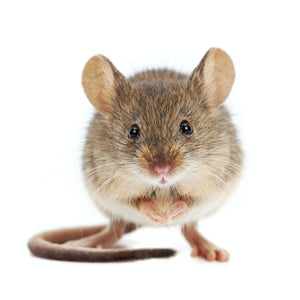
 There are many varieties of fancy mice, with varying markings and coat types, however, the most common mouse is the white mouse with red or black eyes.
There are many varieties of fancy mice, with varying markings and coat types, however, the most common mouse is the white mouse with red or black eyes.